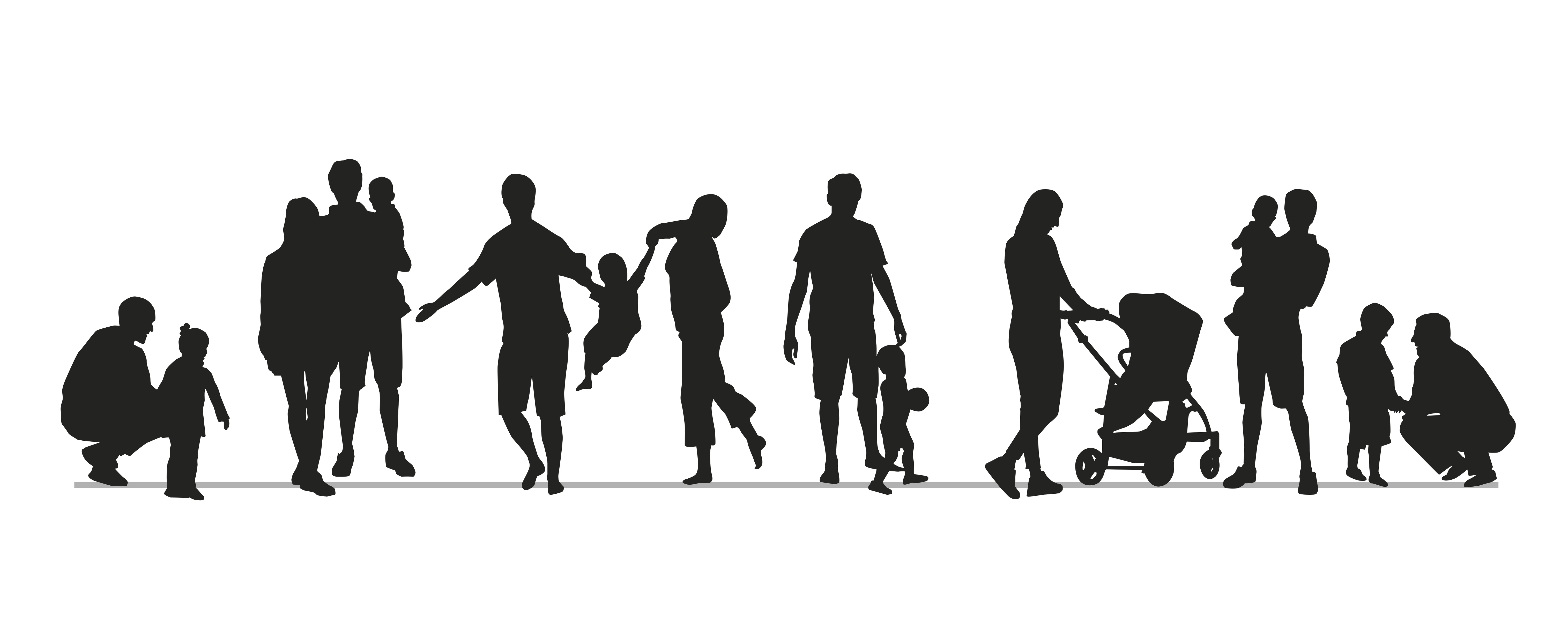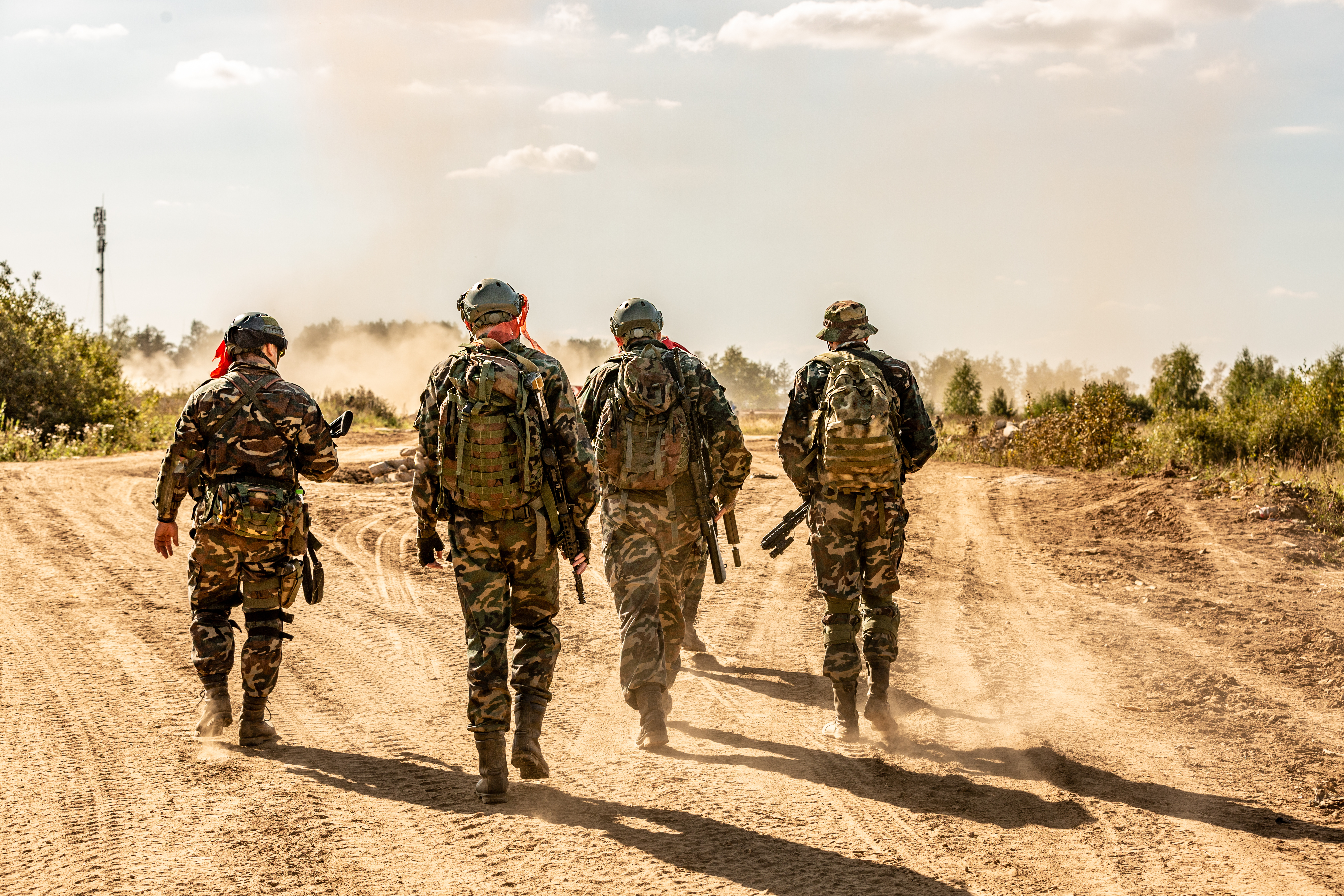Prevalence
This category contains information on the worldwide prevalence of PTSD, which refers to how many overall cases there are per population in a specified time period, and how it varies in people exposed to different traumas, including disaster survivors, those exposed to pandemics, or abuse and violence. Click on the tabs below to access the information, or browse via the drop-down section on the left.
Image: ©MQ-Illustrations – stock.adobe.com

Prevalence in abuse and violence survivors
What is prevalence of PTSD in people exposed to abuse and violence? Prevalence represents the overall proportion of individuals in a population who have the disorder of interest. It is different from incidence, which represents only the new cases that have developed over a particular time period. Point prevalence is the proportion of individuals who have the disorder at a given point in time. Period prevalence is the proportion of individuals who have the disorder over specific time periods. Lifetime prevalence is the proportion of individuals who have ever had the disorder. Lifetime morbid risk also includes those who had the…

Prevalence in bereaved people
What is prevalence of PTSD in bereaved people? Prevalence represents the overall proportion of individuals in a population who have the disorder of interest. It is different from incidence, which represents only the new cases that have developed over a particular time period. Point prevalence is the proportion of individuals who have the disorder at a given point in time. Period prevalence is the proportion of individuals who have the disorder over specific time periods. Lifetime prevalence is the proportion of individuals who have ever had the disorder. Lifetime morbid risk also includes those who had the disorder but were deceased…

Prevalence in caregivers
What is prevalence of PTSD in parents and caregivers? Prevalence represents the overall proportion of individuals in a population who have the disorder of interest. It is different from incidence, which represents only the new cases that have developed over a particular time period. Point prevalence is the proportion of individuals who have the disorder at a given point in time. Period prevalence is the proportion of individuals who have the disorder over specific time periods. Lifetime prevalence is the proportion of individuals who have ever had the disorder. Lifetime morbid risk also includes those who had the disorder but were…

Prevalence in children and adolescents
What is prevalence of PTSD in children and adolescents? Prevalence represents the overall proportion of individuals in a population who have the disorder of interest. It is different from incidence, which represents only the new cases that have developed over a particular time period. Point prevalence is the proportion of individuals who have the disorder at a given point in time. Period prevalence is the proportion of individuals who have the disorder over specific time periods. Lifetime prevalence is the proportion of individuals who have ever had the disorder. Lifetime morbid risk also includes those who had the disorder but were…

Prevalence in disaster survivors
What is prevalence of PTSD in disaster survivors? Prevalence represents the overall proportion of individuals in a population who have the disorder of interest. It is different from incidence, which represents only the new cases that have developed over a particular time period. Point prevalence is the proportion of individuals who have the disorder at a given point in time. Period prevalence is the proportion of individuals who have the disorder over specific time periods. Lifetime prevalence is the proportion of individuals who have ever had the disorder. Lifetime morbid risk includes those who had the disorder but were deceased at…

Prevalence in elderly people
What is prevalence of PTSD in elderly people? Prevalence represents the overall proportion of individuals in a population who have the disorder of interest. It is different from incidence, which represents only the new cases that have developed over a particular time period. Point prevalence is the proportion of individuals who have the disorder at a given point in time. Period prevalence is the proportion of individuals who have the disorder over specific time periods. Lifetime prevalence is the proportion of individuals who have ever had the disorder. Lifetime morbid risk also includes those who had the disorder but were deceased…

Prevalence in epidemic and pandemic survivors
What is prevalence of PTSD in epidemic and pandemic survivors? Prevalence represents the overall proportion of individuals in a population who have the disorder of interest. It is different from incidence, which represents only the new cases that have developed over a particular time period. Point prevalence is the proportion of individuals who have the disorder at a given point in time. Period prevalence is the proportion of individuals who have the disorder over specific time periods. Lifetime prevalence is the proportion of individuals who have ever had the disorder. Lifetime morbid risk also includes those who had the disorder but…

Prevalence in firefighters
What is prevalence of PTSD in firefighters? Prevalence represents the overall proportion of individuals in a population who have the disorder of interest. It is different from incidence, which represents only the new cases that have developed over a particular time period. Point prevalence is the proportion of individuals who have the disorder at a given point in time. Period prevalence is the proportion of individuals who have the disorder over specific time periods. Lifetime prevalence is the proportion of individuals who have ever had the disorder. Lifetime morbid risk also includes those who had the disorder but were deceased at…

Prevalence in forensic settings
What is prevalence of PTSD in forensic settings? Prevalence represents the overall proportion of individuals in a population who have the disorder of interest. It is different from incidence, which represents only the new cases that have developed over a particular time period. Point prevalence is the proportion of individuals who have the disorder at a given point in time. Period prevalence is the proportion of individuals who have the disorder over specific time periods. Lifetime prevalence is the proportion of individuals who have ever had the disorder. Lifetime morbid risk also includes those who had the disorder but were deceased…

Prevalence in healthcare workers
What is prevalence of PTSD in healthcare workers? Prevalence represents the overall proportion of individuals in a population who have the disorder of interest. It is different from incidence, which represents only the new cases that have developed over a particular time period. Point prevalence is the proportion of individuals who have the disorder at a given point in time. Period prevalence is the proportion of individuals who have the disorder over specific time periods. Lifetime prevalence is the proportion of individuals who have ever had the disorder. Lifetime morbid risk also includes those who had the disorder but were deceased…

Prevalence in homeless populations
We have not found any systematic reviews on this topic that meet our inclusion criteria. Pending enough primary studies, we invite reviews on this topic to be conducted. Alternatively we will endeavour to conduct our own review to fill this gap in the Library. April 2022 Image: ©Leo Lintang – Fotolia- stock.adobe.com

Prevalence in humanitarians
What is prevalence of PTSD in humanitarians? Prevalence represents the overall proportion of individuals in a population who have the disorder of interest. It is different from incidence, which represents only the new cases that have developed over a particular time period. Point prevalence is the proportion of individuals who have the disorder at a given point in time. Period prevalence is the proportion of individuals who have the disorder over specific time periods. Lifetime prevalence is the proportion of individuals who have ever had the disorder. Lifetime morbid risk also includes those who had the disorder but were deceased at…

Prevalence in indigenous people
What is prevalence of PTSD in indigenous people? Prevalence represents the overall proportion of individuals in a population who have the disorder of interest. It is different from incidence, which represents only the new cases that have developed over a particular time period. Point prevalence is the proportion of individuals who have the disorder at a given point in time. Period prevalence is the proportion of individuals who have the disorder over specific time periods. Lifetime prevalence is the proportion of individuals who have ever had the disorder. Lifetime morbid risk also includes those who had the disorder but were deceased…

Prevalence in journalists
What is prevalence of PTSD in journalists? Prevalence represents the overall proportion of individuals in a population who have the disorder of interest. It is different from incidence, which represents only the new cases that have developed over a particular time period. Point prevalence is the proportion of individuals who have the disorder at a given point in time. Period prevalence is the proportion of individuals who have the disorder over specific time periods. Lifetime prevalence is the proportion of individuals who have ever had the disorder. Lifetime morbid risk also includes those who had the disorder but were deceased at…

Prevalence in jurors
What is prevalence of PTSD in jurors? Prevalence represents the overall proportion of individuals in a population who have the disorder of interest. It is different from incidence, which represents only the new cases that have developed over a particular time period. Point prevalence is the proportion of individuals in a population who have the disorder at a given point in time (e.g., at one-month post-trauma), while period prevalence is the proportion of individuals in a population who have the disorder over specific time periods (e.g., one to two months post-trauma). Lifetime prevalence is the proportion of individuals in a…

Prevalence in males vs. females
What is prevalence? Prevalence represents the overall proportion of individuals in a population who have PTSD. It is different from incidence, which represents only the new cases that have developed over a particular time-period. Point prevalence is the proportion of individuals in a population who have the disorder at a given point in time (e.g., at one-month post-trauma), while period prevalence is the proportion of individuals in a population who have the disorder over specific time periods (e.g., one to two months post-trauma). Lifetime prevalence is the proportion of individuals in a population who have ever had the disorder and…

Prevalence in medical patients
What is prevalence of PTSD in medical patients? Prevalence represents the overall proportion of individuals in a population who have the disorder of interest. It is different from incidence, which represents only the new cases that have developed over a particular time period. What is the evidence for the prevalence of PTSD in medical patients? Moderate quality evidence finds the overall prevalence of PTSD in primary care settings (first-contact medical care centres) is around 12.5%. In critical illness survivors, the prevalence of PTSD diagnosis is 20% between discharge from ICU and over 12 months post-discharge. Rates were highest within the…

Prevalence in police officers
What is prevalence of PTSD in police officers? Prevalence represents the overall proportion of individuals in a population who have the disorder of interest. It is different from incidence, which represents only the new cases that have developed over a particular time period. Point prevalence is the proportion of individuals who have the disorder at a given point in time. Period prevalence is the proportion of individuals who have the disorder over specific time periods. Lifetime prevalence is the proportion of individuals who have ever had the disorder. Lifetime morbid risk also includes those who had the disorder but were deceased…

Prevalence in problem gamblers
What is prevalence of PTSD in problem gamblers? Prevalence represents the overall proportion of individuals in a population who have the disorder of interest. It is different from incidence, which represents only the new cases that have developed over a particular time period. Point prevalence is the proportion of individuals who have the disorder at a given point in time. Period prevalence is the proportion of individuals who have the disorder over specific time periods. Lifetime prevalence is the proportion of individuals who have ever had the disorder. Lifetime morbid risk also includes those who had the disorder but were deceased…

Prevalence in psychiatric patients
What is prevalence of PTSD in psychiatric patients? Prevalence represents the overall proportion of individuals in a population who have the disorder of interest. It is different from incidence, which represents only the new cases that have developed over a particular time period. Point prevalence is the proportion of individuals who have the disorder at a given point in time. Period prevalence is the proportion of individuals who have the disorder over specific time periods. Lifetime prevalence is the proportion of individuals who have ever had the disorder. Lifetime morbid risk includes those who had the disorder but were deceased at…

Prevalence in refugees
What is prevalence of PTSD in refugees? Prevalence represents the overall proportion of individuals in a population who have the disorder of interest. It is different from incidence, which represents only the new cases that have developed over a particular time period. Point prevalence is the proportion of individuals who have the disorder at a given point in time. Period prevalence is the proportion of individuals who have the disorder over specific time periods. Lifetime prevalence is the proportion of individuals who have ever had the disorder. Lifetime morbid risk also includes those who had the disorder but were deceased at…

Prevalence in rescue teams
What is prevalence of PTSD in rescue teams? Prevalence represents the overall proportion of individuals in a population who have the disorder of interest. It is different from incidence, which represents only the new cases that have developed over a particular time period. Point prevalence is the proportion of individuals in a population who have the disorder at a given point in time (e.g., at one-month post-trauma), while period prevalence is the proportion of individuals in a population who have the disorder over specific time periods (e.g., one to two months post-trauma). Lifetime prevalence is the proportion of individuals in…

Prevalence in road traffic accident survivors
What is prevalence of PTSD following road traffic accidents? Prevalence represents the overall proportion of individuals in a population who have the disorder of interest. It is different from incidence, which represents only the new cases that have developed over a particular time period. Point prevalence is the proportion of individuals who have the disorder at a given point in time. Period prevalence is the proportion of individuals who have the disorder over specific time periods. Lifetime prevalence is the proportion of individuals who have ever had the disorder. Lifetime morbid risk also includes those who had the disorder but were…

Prevalence in soldiers and veterans
What is prevalence of PTSD in soldiers and veterans? Prevalence represents the overall proportion of individuals in a population who have the disorder of interest. It is different from incidence, which represents only the new cases that have developed over a particular time period. Point prevalence is the proportion of individuals who have the disorder at a given point in time. Period prevalence is the proportion of individuals who have the disorder over specific time periods. Lifetime prevalence is the proportion of individuals who have ever had the disorder. Lifetime morbid risk also includes those who had the disorder but…

Prevalence in train drivers
What is prevalence of PTSD in train drivers? Prevalence represents the overall proportion of individuals in a population who have the disorder of interest. It is different from incidence, which represents only the new cases that have developed over a particular time period. Point prevalence is the proportion of individuals who have the disorder at a given point in time. Period prevalence is the proportion of individuals who have the disorder over specific time periods. Lifetime prevalence is the proportion of individuals who have ever had the disorder. Lifetime morbid risk also includes those who had the disorder but were deceased…

Prevalence in war and terrorism survivors
What is prevalence of PTSD in war and terrorism survivors? Prevalence represents the overall proportion of individuals in a population who have the disorder of interest. It is different from incidence, which represents only the new cases that have developed over a particular time period. Point prevalence is the proportion of individuals who have the disorder at a given point in time. Period prevalence is the proportion of individuals who have the disorder over specific time periods. Lifetime prevalence is the proportion of individuals who have ever had the disorder. Lifetime morbid risk also includes those who had the disorder…

Spatial variation in prevalence
What is spatial variation in the prevalence of PTSD? Prevalence represents the overall proportion of individuals in a population who have the disorder of interest. It is different from incidence, which represents only the new cases that have developed over a particular time period. Point prevalence is the proportion of individuals in a population who have the disorder at a given point in time (e.g., at one-month post-trauma), while period prevalence is the proportion of individuals in a population who have the disorder over specific time periods (e.g., one to two months post-trauma). Lifetime prevalence is the proportion of individuals…

Worldwide prevalence
What is worldwide prevalence of PTSD? Prevalence represents the overall proportion of individuals in a population who have the disorder of interest. It is different from incidence, which represents only the new cases that have developed over a particular time period. Point prevalence is the proportion of individuals in a population who have the disorder at a given point in time (e.g., at one-month post-trauma), while period prevalence is the proportion of individuals in a population who have the disorder over specific time periods (e.g., one to two months post-trauma). Lifetime prevalence is the proportion of individuals in a population…
Green - Topic summary is available.
Orange - Topic summary is being compiled.
Red - Topic summary has no current systematic review available.
